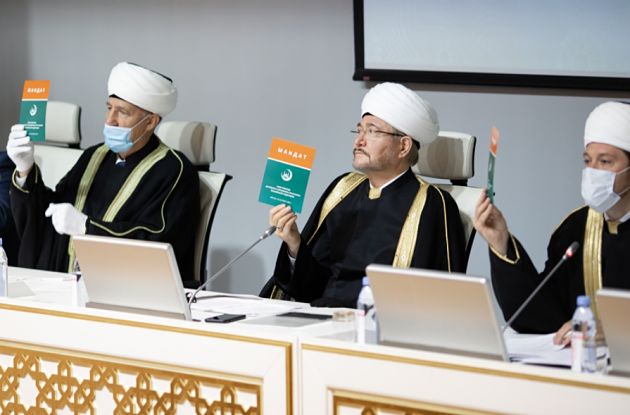The plenum of the Spiritual Administration of Muslims of Russia (DUM RF), which took place this week, on September 23, did not bring any sensations, but only confirmed the already practically adopted decisions, about which we wrote earlier. Allegorically speaking, it can be said that Ravil Gainutdin, with his own de facto and now de jure subordinates, has given himself the mandate he has been seeking for a long time. Now, after the decisions made in the plenum, it can be said that Ravil Gainutdin himself has closed the project, the initiator of which he became in the mid-1990s – the Council of Muftis of Russia (SMR), transforming it from a union of equal regional spiritual administrations of Muslims into a structure within the centralized DUM RF. In effect, he is trying to return the situation to the moment before the SMR was created, only now he is at the helm. But more on this later.
According to the adopted decisions, as of September 1, 2020, the employees of the SMR, including Gainutdin himself, will be integrated into the DUM RF. As for the muftis themselves, i.e. the members of the SMR (already) under the DUM RF, they will now be approved by the leader of the latter, i.e. Ravil Gainutdin. The former associate and current opponent of Gainutdin, Mufti Nafigulla Ashirov, who heads the Spiritual Administration of Muslims of the Asian part of Russia (DUMACHR), will definitely not be included in their number. Recall that it was part of the former independent SMR, along with the Gainutdin-led Spiritual Administration of Muslims of the European Part of Russia (DUMER), but refused to join the DUM RF. However, such a large entity as the DUMACHR is hardly needed by the new leadership of the DUM RF – hence the desire to absorb communities that are part of the latter, or to create alternatives to them in separate regions of Asia, which became one of the reasons for the conflicts between the leaders of the DUMACHR and the DUM RF.
Among the muftis and members of the former independent SMR who agreed to join the new SMR under DUM RF is Mufti Mukaddas Bibarshev of the Saratov region. However, as his speech at the plenum made clear, he agreed to all these reforms without much enthusiasm, rather out of fear of a split. Nevertheless, in his speech he warned unequivocally that the policy of subordinating regional DUMs to the new “vertical of power” of the DUM-RF could lead not to unification but to the division of Muslims. We, for our part, will not repeat what has been written many times – about the futility of the DUM RF model of the “Muslim mother church” being built and its incompatibility with the challenges of the time – those who are interested can read about it using the links above. Instead, we will ask another question.
A year ago Ravil Gainutdin solemnly celebrated the 30th anniversary of his ministry. But if we count, it turns out that out of these 30 years, 23 years were spent under his leadership of the former, now abolished SMR, and 7 years under the Central Spiritual Administration of Muslims (TSUM) led by Talgat Tadzhuddin, from whose power he led the regional DUMs and their unification into the SMR. However, the decisions that have been made actually make those 23 years and the rejection of the path of those 7 years in favor of the new model meaningless. Because it turned out that the rejection of the TSUM model in favor of the model of the Independent Council of Muftis of Russia was not justified, and now Gainutdin has decided to build the TSUM 2.0 instead of the TSUM 1.0, which he himself destroyed.
But why? If all these “games of democracy and federalism” did not justify themselves, as the ideologists of DUM RF are trying to prove now, does it not mean that according to this logic today it was not Gainutdin who was right, but originally it was Talgat Tadzhuddin? And that 23 years of attempts to build an alternative to his model were in vain, and 7 years of work under his leadership were in vain? Or were they all spent just to become a new Tadzhuddin himself?

